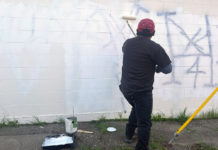The decision by the Sonoma County Board of Supervisors to keep
permanent pavement on only a core network of county roads has drawn
mixed reviews ranging from visions of country roads to wrecked
emergency vehicles.
Last month the board voted, asserting economic necessity, to
limit regular preservation of paved roadways to a little more than
150 miles of unincorporated county highway.
The roads represent about 11 percent of the county’s 1,382-miles
of roadways, according to county officials.
The plan, according to Sonoma County Transportation and Public
Works Deputy Director Tom O’Kane, is to spend about $4.5 million
annually to keep permanent pavement on 33 proposed “priority
roads.” The plan has been approved by county supervisors.
The priority roads include Airport Boulevard, Alexander Valley
Road, Bodega Avenue, Dry Creek Road, Guerneville Road, Fulton Road,
Healdsburg Avenue, Mirabel Road, Occidental Road, Old Redwood
Highway and River Road, among others.
O’Kane said the plan comprises an “abbreviated” list of roads
ultimately eligible for federal funding.
O’Kane said, “for the foreseeable future we will continue minor
repairs, like pot holes,” on the non-priority roads and when pot
hole repairs become unfeasible – as in a wrecked asphalt surface –
the idea is to pulverize the compromised asphalt along with the
road base material and convert the road to gravel rather than haul
the asphalt away.
“We’re going to mix in a binder, say cement or lime, let it sit
for awhile then apply an armor coating,” he added, “for low volume
roads it’s a lot less expensive than paving – say ten times
less.”
He added that compounding the problem is that his department,
because of fiscal cutbacks, has lost some 55 personnel, including
office and road staff this year.
“We’re down two road yards – Forestville is closed – and it
hurts,” O’Kane said.
Brian Kirk, assistant manager of the Jimtown Store near
Geyserville on Highway 128, lives on a private, gravel road, but
said he hasn’t heard much from anyone in the time since the board
of supervisor’s vote about the issue.
“The real issue might be rain,” he said. “I lived in Colorado
for 10 years on a gravel road and after the snow melted the road
crews were out taking care of the gullies.”
Kirk, who lives just south of Healdsburg near the Russian River,
said his private drive has the same gully problem, but the idea of
some roads returning to gravel, or at least to an unpaved state,
had a good side as well.
“I don’t mind gravel roads really,” he said. “After all, it’s
more like living in the back country. And as far as riding a bike
goes, I think riding a street bike on gravel roads helps me
exercise my bike handling skills, although it’s probably a good
idea to have a spare.”
“When the roads are gravel,” he said, “the street bike people
might not like it, but the mountain bike people will. It’s just a
little wilder.”
Wildness is exactly what concerns Al Fiori, chairman of the Gold
Ridge Fire Protection District, if smaller local roads in the
75-square-mile district are let go.
“We’re bound to have suspension problems on the heavy trucks,”
Fiori said. “On the roads we go on in West County, like Burnside or
Sexton or Hessel most of them are terrible.”
Fiori said the trucks are hauling from 500 to 1,500 gallons of
water, and with a gallon of water weighing eight pounds, that’s a
lot of weight.
“And in addition to the condition of the road, the county has
stopped clearing away vegetation on a lot of them, sometimes taking
away two feet of roadway,” he said. “It’s going to take a toll on
the trucks and in the dark and rain it will be that much more
difficult for fire response.”
County officials said money for roadwork comes essentially from
state and federal gas taxes and very little from local property
taxes, amounting to about $18 million annually.
Out of that, $4.5 million is spent on pavement preservation and
the rest on regular roadwork like clearing brush and repairing
storm drains and roadway bridges.
“The local property tax provides 1 percent on the dollar to
public works,” O’Kane said, “which is part of the problem. The
locality sends the tax money to Sacramento then the legislature
takes it and doles it out, and because of Prop 13, there is less
money.”
And, county officials say, with modern cars getting increased
gas mileage, the outlook for more local gas tax revenues decreases
as time goes by.
In addition, county officials say many of the area’s rural roads
are basically overlays of old wagon and cattle paths unable to
really sustain the pounding from modern vehicles, particularly
equipment like giant gravel trucks.
Meanwhile, O’Kane said he was not surprised by the failure of
Sonoma County Measure W, which garnered 42.3 percent of the yes
vote as opposed to some 57.7 of the nays.
The measure, touted as a “pot hole filler,” would have tacked a
$10 annual vehicle license fee from the Sonoma County
Transportation Authority. It also would have improved the county
bus service, and implement a countywide Safe Routes to School
program.
“Anyone who read the measure could see it was untruthful about
the pothole repair part,” he said. “Only a small portion went to
roads and most to other transit.”
“The infrastructure needs more funding than people are willing
to pay for,” O’Kane said. “But, in time, I think people will figure
this out.”
52.4
F
Healdsburg
March 11, 2025







